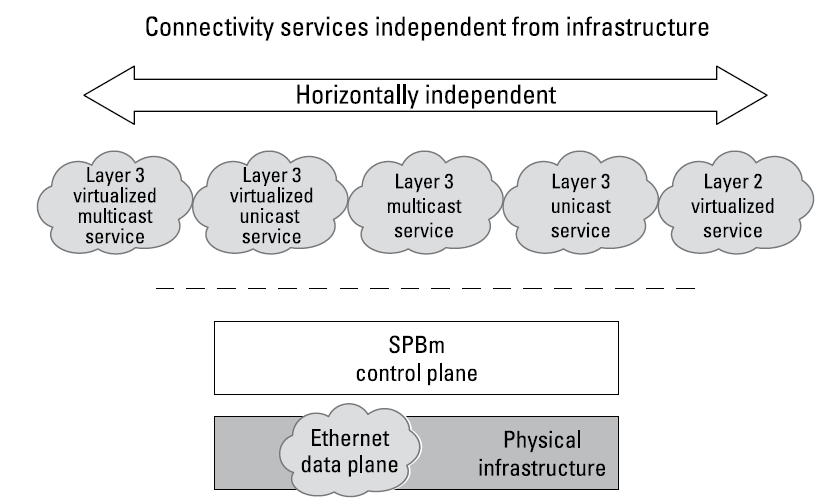Translations: "English" |
Extreme Networks Fabric
With this post, I am starting a series of episodes about Fabric Networking by Extreme Networks.
Why Fabric
Traditional networks could be difficult to scale and they usually suffer from spanning tree and/or broadcast issues.
Fabric Networking allows you to scale on demand, create redundant paths for high availability and fault tolerance, improve security and much more. In other words, it allows for a more flexible and automated network.
Challenges with traditional networks are:
- Outdated design: many of the common network protocols originating almost 30 years ago;
- Manual configuration: configure devices, switch by switch, via CLI, in a dynamic environment, is time consuming and error prone;
- Vulnerability to breaches: leagacy networks segregate traffic through VLANs with ACLs or firewall policy.
What is Fabric
Today, we can encounter two types of fabric networks:
Ethernet fabrics: they are based on standard protocol such as Shortest Path Bridging (SPB) and use L2 switched paths to forward traffic. They also use link state protocol as control plane (IS-IS or OSPF). This design allows all links to be active, eliminates MAC scaling issues and enables sub-second reconvergence.
Most important, Ethernet fabrics define the type of fabric, but not what type of services running across it (it could be also L3 services);
IP fabrics: they are based on standard protocol such as BGP and EVPN. More or less, they bring the same advantages of Ethernet fabrics and they also support L2 or L3 services.
The main differences between Ethernet and IP fabrics are in the control and data planes used. In IP fabric, BGP is usually used as control plane, while BGP/EVPN with VXLAN tunnels are used for the data plane.
Extreme Networks solution for campus is Ethernet fabric based on SPB.
SPB

Shortest Path Bridging (SPB) is an Ethernet-based fabric where all networking services are virtualized and decoupled from the physical infrastructure. Two variants of SPB exist (SPBV and SPBM). Here we will refer to SPBM.
Some benefits of using SPB are:
- Multiple physical topologies are supported (mesh, rings, etc.);
- There are no blocked paths;
- Logical loops are eliminated;
- There is no flooding and learning of a typical Ethernet network, delivering sub-second failover and recovery;
- Provisioning is necessary only on the edge;
- Single control plane.
As control plane, SPB uses IS-IS, in order to create a "stateful" network topology.
SPB defines a 24-bit service ID (I-SID): it is a unique identifier that can be used for any L2 or L3 service.
SPB packet headers are based on MAC layer addresses, but when bridging traffic, it uses IS-IS routing protocol to populate all forwarding entries instead of flooding and learning mechanisms. This brings to a robust and predictable fabric network.
User packets are encapsulated and forwarded using the backbone MAC addresses. Only at fabric bounder user MAC address is used for forwarding decision.
SPB is standardized as IEEE 802.1aq (now part of 802.1Q). Layer 3 extensions to SPB are defined in RFC 6329.
Traditional networks use constructs such as VLANs, IP subnets and VRF. In SPB these constructs are treated as network services. They are named Virtual Service Networks (VSNs) and they are mapped to an I-SID. VLAN extensions across a network infrastructure are called L2 VSNs, while VRFs are called L3 VSNs. VLANs or VRFs mapping to I-SID is done only at the edge nodes of the network and then the I-SID information is propagated to the network through IS-IS and calculating the shortest path.
Another feature of SPB is IP shortcuts. It leverage the global routing table to forward IP packets directly over SPB network, without using I-SID; i.e. the IP encapsulation is mapped directly to an Ethernet header.
Morevoer, SPB supports IP multicast services without requiring to configure multicast protocol such as PIM or DVMRP. It offers superior performance for any multicast deployment (one-to-many, many-to-few or many-to-many). When a multicast stream is received, it is mapped to a dedicated I-SID. IS-IS forwards I-SID only to nodes that register to receive it through IGMP. IP Multicast can be enabled over both L3 and L2 VSNs or over the global routing table as IP multicast shortcuts.